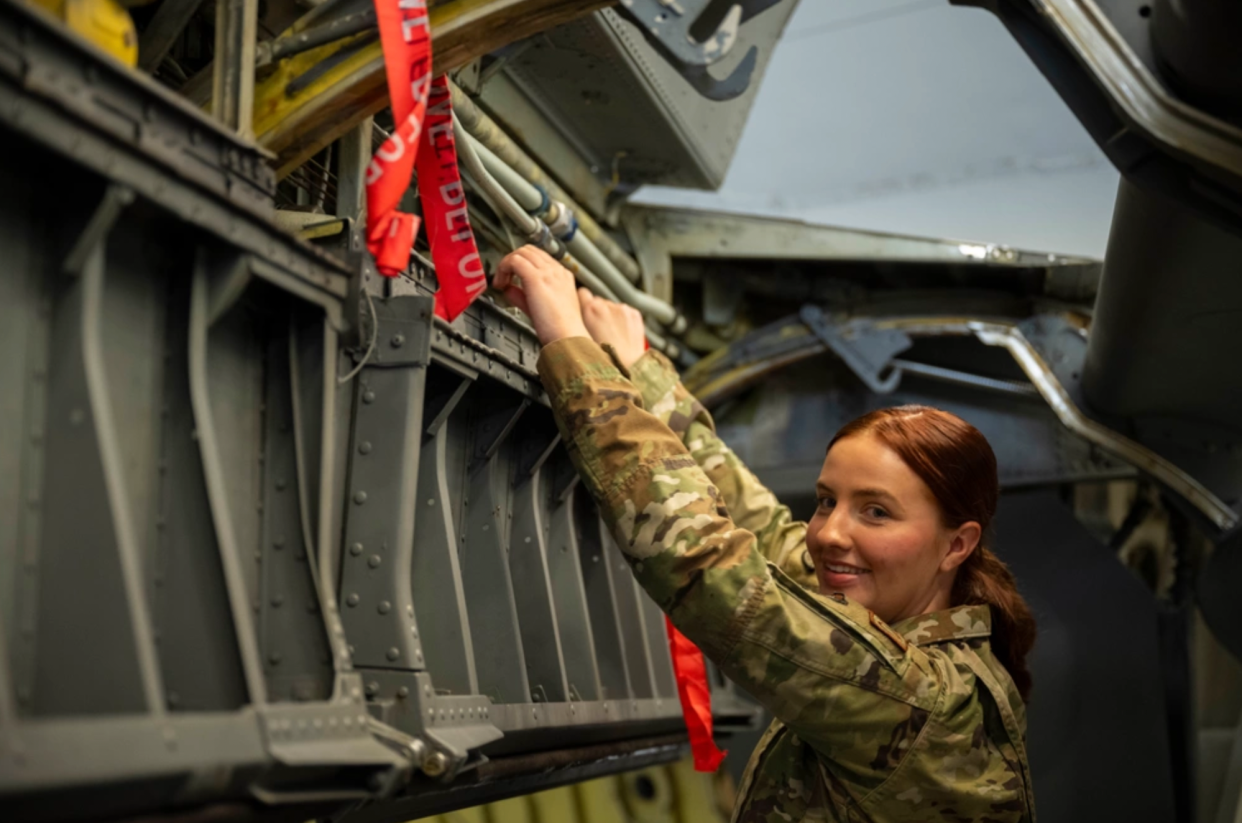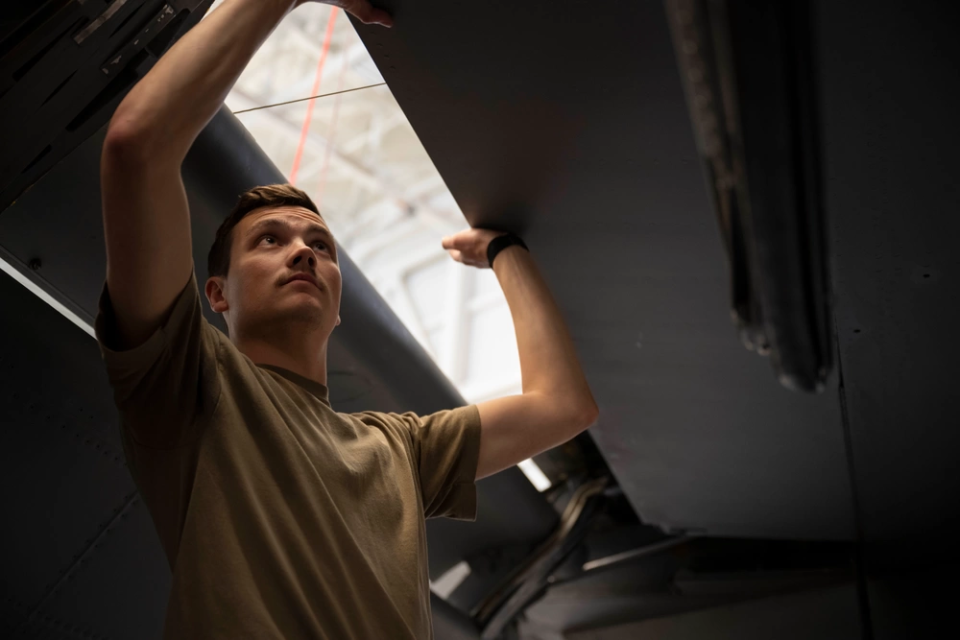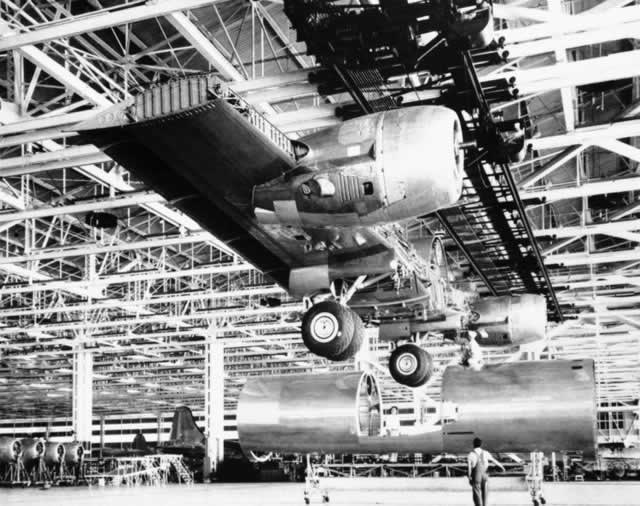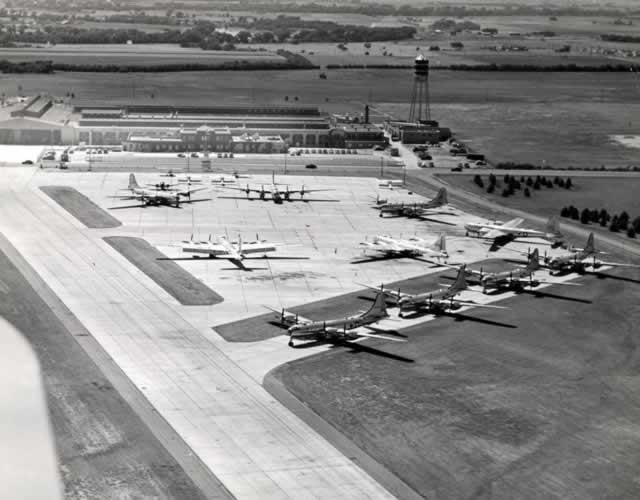Airmen volunteered to repair a WWII B-29 Superfortress ... and it's going to fly again

Something incredible has been happening in Wichita, Kansas at the Dwight D. Eisenhower National Airport lately. A group of five Airmen, led by Master Sgt. Kenneth Jenkins, 22nd Maintenance Squadron flight chief, have been volunteering their time for a special project: restoring "Doc," a B-29 Superfortress. The team has dedicated countless hours to repairing and manufacturing cables that previously deemed Doc unflyable. Doc is one of only two Superfortresses flying today, so keeping her going is more than just a job; it's personal.
“There’s people who are still alive that flew this aircraft during World War II,” Jenkins told Airman Paula Arce in a story for McConnell Air Force Base. “There’s a lady who just turned 99 that put the rivets into that aircraft back in the 1940s.”

“When younger people get involved, it’s really neat,” said Jenkins. “Being an older guy, we get sentimental about old equipment. The fact that we had so many younger people step up and volunteer to do this on their own time - it’s awesome.”
The work in Wichita is coming full circle, with a storied history of the aircraft. At the Cairo Conference in 1943, President Roosevelt pledged his support to the Chinese in their fight against Japan. Roosevelt committed America's newest bomber, the Boeing B-29 Superfortress, to bomb Japan from bases in China and India by the spring of 1944. At the time, less than 100 B-29s had been built, and a mere 15% of them were actually flyable. Roosevelt had to quickly ramp up production to make good on his word. WATM's Miguel Ortiz explained, "Hurried development of the B-29 was pressed on with little regard for cost, monetary or labor wise. Though B-29s and their components were assembled across the country from Washington to Georgia, the majority of B-29 work was done at Boeing's plants in Wichita, Kansas. With production so rushed, much of the assembly line was located outdoors. The workforce battled heavy snowfall and negative temperatures during the winter of 1943-1944 to keep B-29s flowing into the hands of aircrews. On some days, workers could only operate in 20 minute stretches before they had to retreat to the warmth of one of the gasoline heaters laid out on the flight line."

"Despite the best efforts of everyone involved, Roosevelt's promise was not met, though he determined that it was close enough," Ortiz said. "The first 130 B-29s made the 11,500-mile journey from the U.S. to airbases in China and India by May 8, 1944. On June 15, 68 B-29s took off for the first bombing of the Japanese mainland since the Doolittle Raid of 1942. Unfortunately, the mission failed to hit its target and resulted in the loss of six aircraft."

While Roosevelt's commitment fell short, the impressive B-29s had a lasting impact and a critical role in the war. It's why volunteers donated hundreds of thousands of hours over two decades to get her up and going again, and why Jenkins and his team are repairing Doc. According to Arce, "Jenkins believes it is crucial to continue to preserve aircraft like Doc so future generations understand the past and help create a deeper appreciation for the aircraft that brought America to victory time after time."
https://www.youtube.com/watch?v=zgqPAmJJ1BA
So where can you see Doc? You can find a full schedule on Doc's friend's website.
READ MORE ON WATM:
Today's Springfield Armory isn't your grandpa's Springfield Armory
4 of the weirdest things the Nazis ever did
How Apple TV+ followed ‘Band of Brothers’ and ‘The Pacific’ with ‘Masters of the Air’
The 5 most legendary snipers of all time

